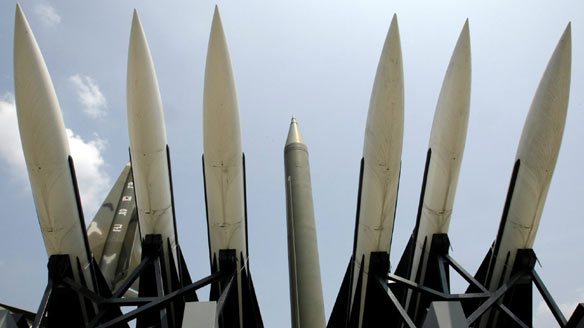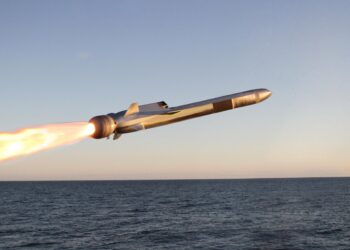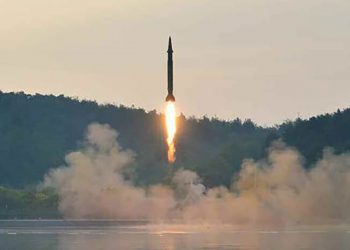The Cuban Missile Crisis took place 50 years ago this October, when US and Soviet leaders pulled back from the very brink of nuclear war. This was the closest the world has come to nuclear war, but exactly how close has been a matter of some speculation.
The conflict, itself, has been analyzed and interpreted, but the number and types of nuclear weapons that were operational have not. According to fresh analysis available in the Bulletin of the Atomic Scientists, published by SAGE, senior experts calculate the nature of weapons capabilities on both sides, and write that the situation was even more perilous than history has previously acknowledged.
In their latest issue of “Nuclear Notebook”, Robert S. Norris, senior fellow with the Federation of American Scientists (FAS) in Washington, DC, and Hans M. Kristensen, the director of the FAS’s Nuclear Information Project, revisit key information that was available to military and civilian officials in both the United States and the Soviet Union at the height of the crisis, during October and November of 1962.
This detail on the number and status of weapons-known as the nuclear order of battle-has remained widely overlooked by many authors, experts, and researchers over the past five decades.
Several types of US and Soviet nuclear weapons were operational, some on high levels of alert and readily available to use. Until now, writers have tended to home in on certain types of weapons in their accounts, leaving valuable detail on others in the margins. The authors believe that only when the status of each weapon system available has been examined in detail can the true nature of the crisis be assessed.
To accurately calculate the likelihood of a full-scale nuclear war in October 1962, the authors write, the nuclear order of battle must be clarified. This can be broken down into three categories:
+ Local forces, which were the Soviet and US nuclear weapons in and around Cuba;
+ Regional forces, which were both the US tactical weapons in Europe that could hit targets in the Soviet Union, as well as the Soviet weapons in western USSR that were aimed at European targets;
+ Global forces, which included the US strategic nuclear weapons-intercontinental ballistic missiles (ICBM), submarine-launched ballistic missiles (SLBM), and long-range bombers-that could reach the Soviet Union, and, of course, the Soviet strategic nuclear weapons that could reach the United States.
In terms of local forces and unknown to the United States, 158 Soviet nuclear warheads of five types were already in Cuba by the time the military blockade was imposed on October 24th.
Still, 50 years later, it is unknown how ready they were or whether they were specifically targeted at US cities. US Joint Chiefs of Staff considered using nuclear weapons during a Cuban invasion, but by October 31st had decided against this.
In Europe, the United States had approximately 500 nuclear weapons at its disposal to attack targets in the western Soviet Union. With its 550 nuclear weapons, the Soviet Union had a slightly larger arsenal to hit European targets.
At a global level, when the Cuban Missile Crisis unfolded, the nuclear arms race was still relatively immature. Even so, Soviet Premier Nikita Khrushchev and his military advisers knew that US strategic nuclear forces outnumbered theirs by a ratio of 17 to 1 in 1962.
“Volumes have been written about the crisis,” says Norris. “Even so, in the tens of thousands of pages that interpret and analyze this conflict, there are essential details missing-specifically, a comprehensive nuclear order of battle.”
He goes on to conclude that, “examining in detail the status of each weapon system shows the true nature of the crisis- and that it was even more serious and dangerous than previously thought.”
“The Cuban Missile Crisis: A Nuclear Order of Battle, October and November 1962” by Robert S. Norris and Hans Kristensen published 12 October 2012 in The Bulletin of the Atomic Scientists. On October 24th, Norris will deliver a presentation on the nuclear order of battle at the Wilson Center in Washington, DC.










